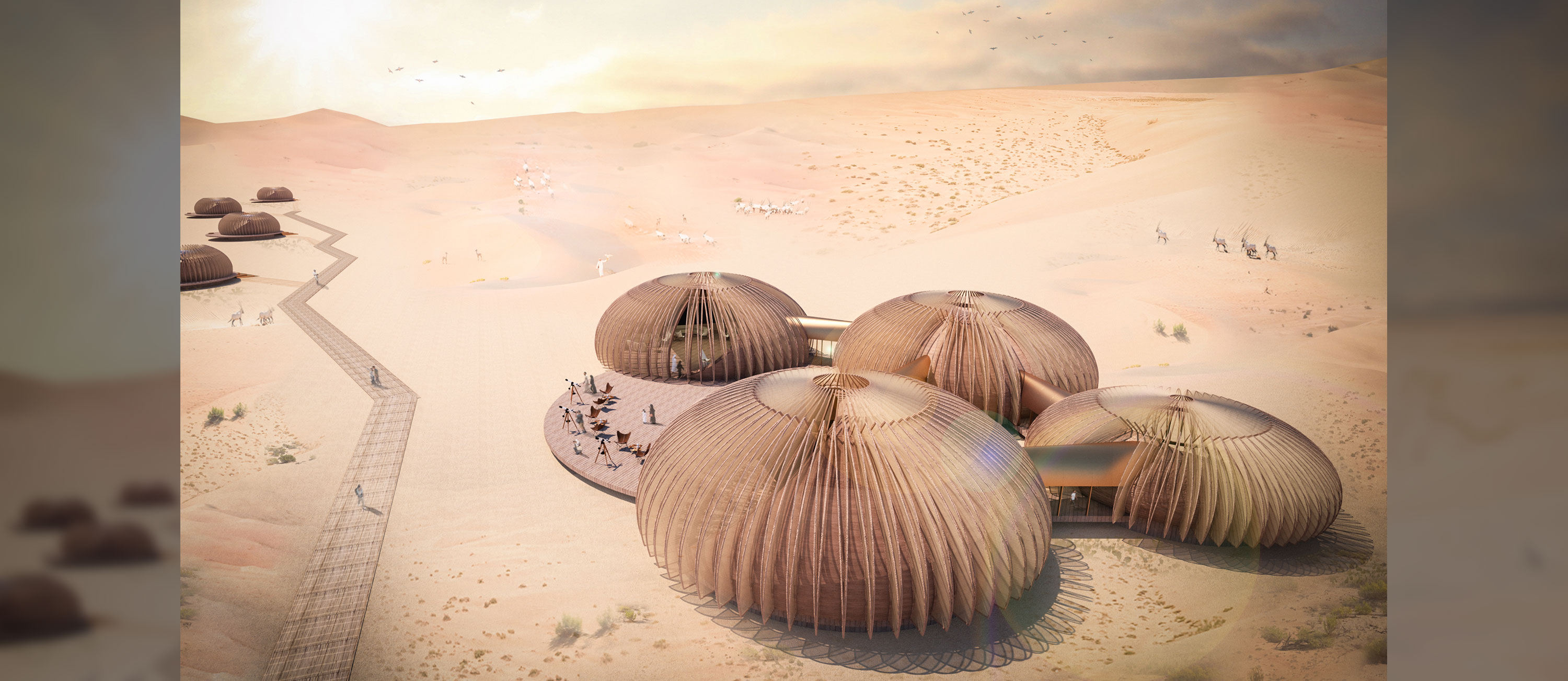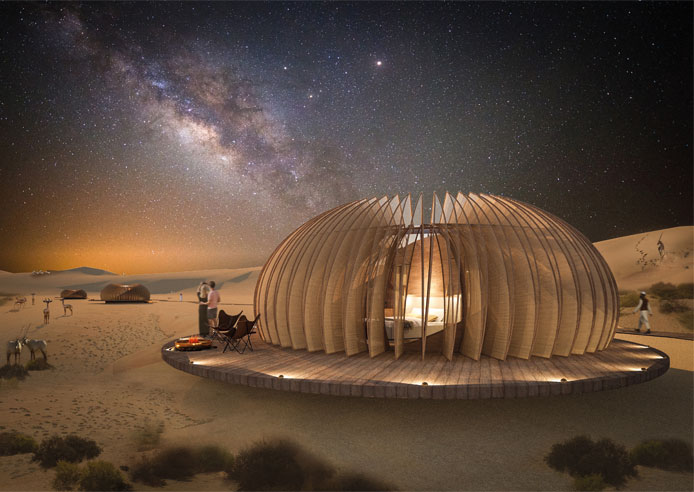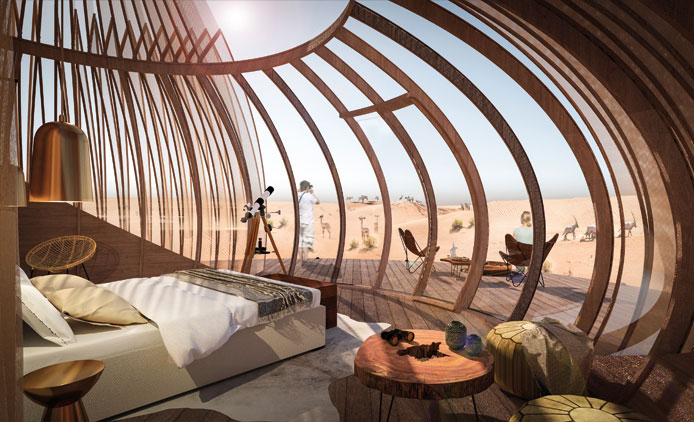
Chill-out in the OCULUS

The ambient weather conditions are punishing, to put it mildly. Maximum daytime temperatures of 50°C are not unusual, and even when they remain out of reach the sunshine is relentless and water is correspondingly scarce. For this is Rub’ Al-Khali, the vast tract of sandy desert that extends across Southern Saudi Arabia into Abu Dhabi and the United Arab Emirates. Appropriately enough for what is one of the most inaccessible, inhospitable and unforgiving environments on Earth, its Arabic name means ‘Empty Quarter’.
– It’s certainly not the first place that comes to mind as an ideal spot for a relaxing holiday. But the Rub Al-Khali’s challenging reputation has not deterred international architects including the enterprising Mexican partnership AIDIA STUDIO from developing concepts for environmentally sustainable ‘ecolodges’, in response to a call from the Environmental Agency in Abu Dhabi. The AIDIA architects Natalia Wrzask and Rolando Rodriguez Leal won one of the top prizes for their ‘Rub Al-Khali Oculus’ design. Not only is their concept spectacular, it also blends seamlessly into the dune landscape of the Empty Quarter.
The designers have drawn inspiration from organisms that have managed to establish themselves in this ruthless habitat – dome-shaped cactus species that create their own “shady niches” that protect them from the intense solar heat. Their fleshy surfaces are patterned into folds that serve to collect and dissipate solar radiation, thus enabling the plants to reduce their internal temperatures and avoid overheating.

This design for a hotel bungalow conveys romance and luxury in the desert.
The designers have drawn inspiration from organisms that have managed to establish themselves in this ruthless habitat – dome-shaped cactus species that create their own “shady niches” that protect them from the intense solar heat. Their fleshy surfaces are patterned into folds that serve to collect and dissipate solar radiation, thus enabling the plants to reduce their internal temperatures and avoid overheating.

Comfort in the sand: The construction and mechanism of the lamellar structures provide sufficient shade.
The architects have recreated the major features of this cooling system by surrounding their pod-like ‘ecolodges’ with a flexible lamellar structure reminiscent of a Chinese lantern, which serves to regulate the temperature of the interior. The hotel complex is designed to include 25-30 of these modules. The 60 linked lamellae on the outer surface of each module act as shading panels that provide a reconfigurable ‘palisade’ which protects the residential areas from the heat. The lamellae are connected to each other by strips of a heat-absorbing fabric. In order to accommodate the changing curvature of each module, the lamellae are set closer together on the upper reaches of the structure, which also ensures that the harsh vertical rays of the Sun are more effectively screened out. The orientation of the lamellae can be adjusted depending on the position of the Sun. Over the course of the day, the outer skin is extended or retracted to ensure that shade is provided exactly where it is needed. The lamellae can also be folded flat, cutting off heat flow while ensuring that sufficient light penetrates into the residential area. In this configuration, each oculus blends fully into the landscape, creating ideal conditions for the observation of the desert fauna.
Apart from sand, the other commodity that the Empty Quarter provides in abundance is sunlight. So the architects of the OCULUS project envisage the use of flexible and dye-sensitized solar cells (DSSCs) incorporated into the glazing that lies under the deformable lamellar skin. Such semi-transparent solar cells can also be incorporated into the fabric between the lamellae. Since DSSCs are capable of generating power even under low levels of light, the designers believe that they should produce sufficient energy to supply each oculus with the necessary electricity. In addition, each module has its own water tank that includes a filtration and recycling system for waste water.
Needless to say, all this attention to detail in providing for the basics in such a forbidding setting does not mean that guests have to forego the luxuries they can afford to expect. At night, the upper segment of the lamellar structure can be folded back to reveal a breathtaking panorama of the night sky and – in keeping with the ocular theme – there’s a telescope on the wooden terrace on which each pod rests. The less astronomically inclined can spend the evenings relaxing in the lounge. Bathrooms are decorated with wood panels and lit with natural light from above. A special cladding on the north side is designed to protect the structures from the ravages of sandstorms, which usually come from that direction. Each oculus employs sustainable materials, such as wood from certified sources and organic fabrics in natural colours, so as to minimize disruption of the local wildlife.
For further information:












